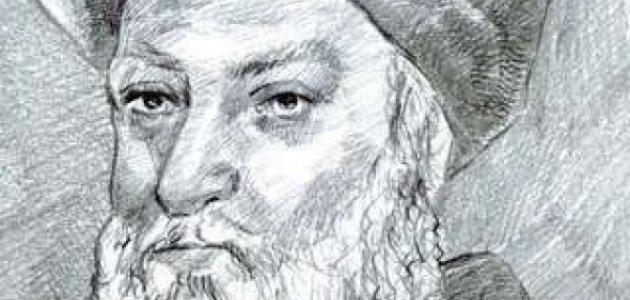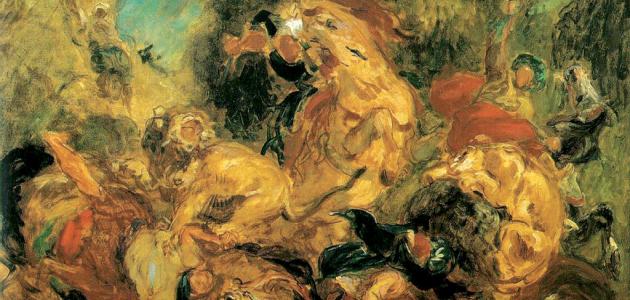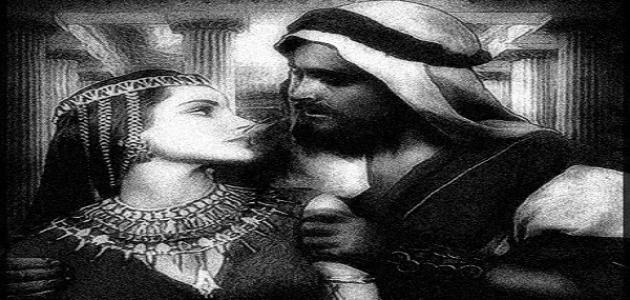Author of the Lexicon of Lisan al-Arab
There are many linguistic dictionaries that are concerned with the Arabic language, its terminology, meanings, and concepts, and the most important of these dictionaries is the dictionary of Lisan al-Arab by Ibn Manzoor, and the dictionary of Lisan al-Arab is the largest and largest language dictionaries; In it, Ibn Manzoor collected what he was able to collect from the vocabulary of the Arabic language, so it included nearly eighty thousand articles, and an incalculable number of derivatives.
Introducing Ibn Manzour
Ibn Manzoor is Abu al-Fadl Muhammad bin Makram bin Ali Jamal al-Din Ibn Manzoor al-Ansari al-Ruwefa’i al-Afriqi, his lineage goes back to Rouifa’ bin Thabit al-Ansari, he was born in Egypt in 1232 AD, and it was said in Tripoli, and he died in Cairo in 1311 AD, he worked in the Office of Creation in Cairo, and he was appointed He was a judge in Tripoli, and in his old age he became blind.
Ibn Manzur's knowledge and work
Ibn Manzoor was a scholar of jurisprudence and language, and he was a student at the hands of Ibn al-Muqir, Yusuf ibn al-Makhaili, Abd al-Rahim ibn al-Tufayl, and Murtada ibn Hatim. Al-Asr and Awn al-Nasr: (I do not know a long book in literature or otherwise except that it has been shortened), and among the books that it has shortened: Al-Yatemah by Al-Tha’alabi, The History of Ibn Asaker, Theil of Ibn Al-Najjar, The History of Al-Khatib, and Kitab Al-Aghani.
Books of Ibn Manzoor
There are many works by Ibn Manzoor, including:
Read also:Search for the most important works of Naguib Mahfouz- The tongue of the Arabs, which is one of the most famous.
- The scattering of flowers in the night and the day, which is the first part of the book Surrour al-Nafs in the perceptions of the five senses, which is considered one of the books of Al-Tifashi and comes in two volumes.
- Brief vocabulary of Ibn al-Bitar.
- Animal Book abbreviation for Al-Jahiz.
- Ammunition flaps.
- Brief news of the study and the publication of the lecture.
- Abi Nawas news.
- Elected and chosen in anecdotes and poems.
Ibn Manzur's poetry
Ibn Manzoor's work was not limited to writing and writing, but he used to compose poetry and write poems, and among his poems he composed:
- Put my book down if it comes to you
- Z and his heart in your hands for mama
- On its seal and on its sides
- Kisses I gave birth to twins
- I meant it directly
- Z and Kafik Baltami if what
Also among his poems:
Read also:Introduction to the poet Zuhair Pharaoh- People delusional about us and designed
- On that of them are souls and hearts
- And they suspected, and some suspicion is a sin, and all of them
- For his sayings in us, he is watched
- Let us fulfill their suspicions to relieve them
- From the sin in us once and repent
Lisan Al Arab Lexicon
Definition of Lisan Al Arab Lexicon
One of the most famous works of Ibn Manzoor is the Lexicon of the Arabs, and it is considered one of the most famous Arabic dictionaries, and it is a necessary reference for researchers in various fields. It contained in its folds five dictionaries; Ibn Manzoor relied on them in preparing Lisan al-Arab and took them as his reference, namely: Sahih al-Jawhari, Muhakam Ibn Saydah, Tahdheeb al-Azhari, Haashiyat Ibn Burri, and al-Nihaya by Ibn Atheer. That is why the dictionary of Lisan al-Arab constitutes a legacy and linguistic wealth, as Ibn Manzoor collected five dictionaries in it and took care of it, so it was of high quality in all its aspects, so that he arranged it in the order of correctness.
Read also:How did Antara bin Shaddad die?And the tongue of the Arabs had a clear effect. As researchers, authors, and the general public flocked to acquire it; Because it has a great heart in their lives, it is considered a comprehensive linguistic encyclopedia as described by Ahmed Faris al-Shidyaq; Because it contains most of the vocabulary of the Arabic language, as linguists paid clear attention to it, by rearranging its contents, coordinating it, and printing it again, and there are many studies that were written and developed around it, including Correction of the Tongue by Ahmad Taymur Pasha, and Refinement of the Tongue by Abdullah Ismail Al-Sawy.
The arrangement of the contents of the dictionary of Lisan al-Arab
The dictionary of Lisan al-Arab was arranged in terms of letters and roots, so Ibn Manzoor divided the lexicon into twenty-seven chapters based on the last letter. As for the letters, Ibn Manzour divided the letters in the dictionary of Lisan al-Arab in terms of their abundance into low-frequency letters, high-frequency letters, and medium-frequency letters. Where the number is less than twenty parts, and thus it represents part of the five hundred parts of the roots of the lexicon of the Arab tongue, the roots of the three, four and five, and the six roots and were very rare.
The first edition of Lisan al-Arab was printed about ninety years ago at the Amiri Press in Bulaq in Cairo, on a handwritten copy of Ibn Manzoor that was endowed by Sultan Barsbay.
Ibn Manzur relied on a clear approach to writing, which was characterized by the following:
- Adopt the rhyme system created by Al-Jawhari.
- In it, he collected Arab poetry, languages, readings, anecdotes, grammatical and morphological rules, and documented the names of the narrators from whom he quoted.
- He cited the different meanings of the texts of the Noble Qur’an and the noble hadith.
- He wrote down all the materials and their derivatives, and he was not satisfied with the correct ones. Where he saw that all vocabulary has the right to be recorded in it.
- Explanation of the exits of the letters and their types. At the beginning of each chapter, a word was issued about the letter with which the chapter is addressed, and it detailed its exit and its characteristics.
Disadvantages of the dictionary of the Arab tongue
The most important defects and shortcomings mentioned by the Arabs:
- The lack of organization and chaos of its materials, and its fullness of speech stuffing.
- He was satisfied with five references and left the other references, which missed him a lot of vocabulary, formulas, meanings, and evidence.









